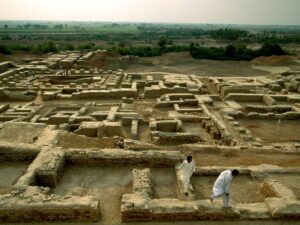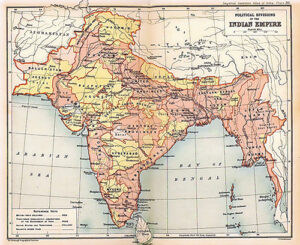We are back in our homes. I want to thank you for the work you did to organize our trip and that it has been very satisfactory. The yoga towel was great for our morning practices. All the services, hotels, dinners have been more than correct. We will keep in touch for future occasions
History
India is known for one of the most ancient civilizations in the world. The first major civilization here flourished for about one thousand years since 2500 BC along the Valley of Indus River. The great cities of this civilization were Mohenjodaro and Harappa which is now in Pakistan. Later invaders swept south from central Asia between 1500 and 2000 BC and took control of northern India thereby pushing the original Dravidian inhabitants to south of country.
Travel to India History
 By 6th century BC, the Magadh dynasty ruled the Northern plains. It was also the time when Buddhism and Jainism emerged and challenged Hindu orthodoxy. The Magadh dynasty rule was followed by the rule of Chandragupta Maurya (322-298 B.C.), one of India’s greatest emperors. The golden period was under the reign of Ashoka the Great who extended his empire from the Kashmir and Peshawar in the North to Mysore in the South and Orissa in the East. Ashoka was not only a great ruler, but he was also one of the most successful propagators of Buddhism not only in India but even in other countries. After his death in 232 B.C. the empire began to disintegrate and weak and that was the time when country was raided and plundered by foreign invaders, leaving India disunited for the next 400 years. After going through a gloomy phase, India had stability again under the rule of Chandra Gupta I (380-412 A.D.). His rule is considered to be the golden period in Indian history as there are all round development, art and culture flourished and the country prospered.
By 6th century BC, the Magadh dynasty ruled the Northern plains. It was also the time when Buddhism and Jainism emerged and challenged Hindu orthodoxy. The Magadh dynasty rule was followed by the rule of Chandragupta Maurya (322-298 B.C.), one of India’s greatest emperors. The golden period was under the reign of Ashoka the Great who extended his empire from the Kashmir and Peshawar in the North to Mysore in the South and Orissa in the East. Ashoka was not only a great ruler, but he was also one of the most successful propagators of Buddhism not only in India but even in other countries. After his death in 232 B.C. the empire began to disintegrate and weak and that was the time when country was raided and plundered by foreign invaders, leaving India disunited for the next 400 years. After going through a gloomy phase, India had stability again under the rule of Chandra Gupta I (380-412 A.D.). His rule is considered to be the golden period in Indian history as there are all round development, art and culture flourished and the country prospered.
Explore India History
 Unlike the North of India, South India remained untouched by impact of what was going in Northern part. South India also saw the rise and fall of many empires which included the Cholas whose rule extended beyond India to Sri Lanka and other parts of South East Asia, the Pandyas, the Pallavas and the Chalukyas. Under the various rulers of these dynasties, arts and craft in the South flourished also saw the emergence of diverse styles of architecture and the grandest architectural accomplishments in the South – the most notable being the delicately crafted Chola bronzes. These were then followed by the Great Hoysala and the Vijaynagar empires which are among the greatest Hindu empires.
Unlike the North of India, South India remained untouched by impact of what was going in Northern part. South India also saw the rise and fall of many empires which included the Cholas whose rule extended beyond India to Sri Lanka and other parts of South East Asia, the Pandyas, the Pallavas and the Chalukyas. Under the various rulers of these dynasties, arts and craft in the South flourished also saw the emergence of diverse styles of architecture and the grandest architectural accomplishments in the South – the most notable being the delicately crafted Chola bronzes. These were then followed by the Great Hoysala and the Vijaynagar empires which are among the greatest Hindu empires.
The Muslim Invasions
Mahmud of Gazni was the first Muslim invader who came to India and plundered the country between 1001 and 1025 for its treasures. Later it was Mohamed Ghori who defeated Indian rules, Prithviraj Chauhan, and left Qutub-ud-din, in charge of the territory. Qutub-ud-din is famous for constructing Qutub Minar in Delhi which remained tallest building in the city for ages. His rule was followed by other Muslim dynasties; Khilji, Tughlaq, Sayyid and Lodis. It was during this period also known as Delhi Sultanat, the Muslim rulers introduced Islamic concepts of society and governance to most of the sub-continent, though the South remained largely untouched.
In 1525, Babur, a descendant of Timur and Genghis Khan invaded Punjab and founded the Mughal empire in India which rules for many centuries. After his death, his son Humayun. Humayun became the rules but he was ousted by Afghan chieftain Sher Shah. Sher Shah is known for building the Grand Trunk road spanning from Peshawar in the west to Patna in east. Humayun was again able to resum power after Sher Shah’s death. After Humayun, it was his his son Akbar who consolidated power and extended the great empire across North India and parts of South India. Akbar is also considered to be one of the most intelligent and best administrator ruler. Akbar was succeeded by Jahangir, followed by his son Shah Jahan who is best known for giving the world, Taj Mahal, the Red Fort and the Jama Masjid. Shah Jahan was succeded by Aurangzeb who was the last powerful Mughal Emperor. Although Mughals ruled for few more generations, but the empire had started becoming weaker. Bahadur Shah Zafar was the last Mughal ruler. After a revolt in 1857-58, Bahadur Shah Zafar was deposed by the British government, who then took control of the country
British Rule
History British Empire in India Since ages, immense wealth of India had attracted foreign traders. The Europeans came to India for commercial purpose.  One of the first Europeans to come to India was the Portuguese trader Vasco da Gama who landed at Calicut, sailing via the Cape of Good Hope in 1498. The Portuguese were followed by the French, the Dutch and the English. By the end of 18th century, the Britishers established themselves as the formidable power in India. They did not only rule the country but also brought olutionary changes in the social, economic and political life of the country.
One of the first Europeans to come to India was the Portuguese trader Vasco da Gama who landed at Calicut, sailing via the Cape of Good Hope in 1498. The Portuguese were followed by the French, the Dutch and the English. By the end of 18th century, the Britishers established themselves as the formidable power in India. They did not only rule the country but also brought olutionary changes in the social, economic and political life of the country.
Toward Independence
Mohandas Karamchand Gandhi after Mughal Empire became weak, India was being ruled by various rulers who were busy in fighting among themselves and could not pose any serious challenge to English. Britishers had consolidated their position. However, Indians in 19th century started to feel frustrated by oppressive policies of British. The frustration led to great revolt or also known as first war of independence in 1857. Although the frustration was building up for quite some time but it was introduction of a new rifle and cartridge by the British Army that helped spark the revolt. The cartridges which soldiers had to bite off, allegedly had pork and beef  which offended the religious sentiments of both Hindus and Muslims. The Indian soldiers in the army reached Delhi and proclaimed Bahadurshah Zafar the sovereign rulers of India and fought under his leadership. The revolt was eventually quelled by British soon.
which offended the religious sentiments of both Hindus and Muslims. The Indian soldiers in the army reached Delhi and proclaimed Bahadurshah Zafar the sovereign rulers of India and fought under his leadership. The revolt was eventually quelled by British soon.
Since then, there was no looking back for the Indians who wanted social reform and freedom from foreign rule. The Indian National Congress was founded on 28th December, 1885 and soon became the largest and most prominent Indian public Organization. The Congress party led the Indian Independence movement besides other leaders and organizations. It had more than 15 million members and 70 million Indians participated in its struggle against British rule in India. The movement gained momentum with the arrival of Mohandas Karamchand Gandhi who devised a unique strategy for India’s freedom struggle based on non-violence and civil disobedience. After various movements, British agreed to transfer power on August 15, 1947, that is now celebrated as India’s Independence Day.

